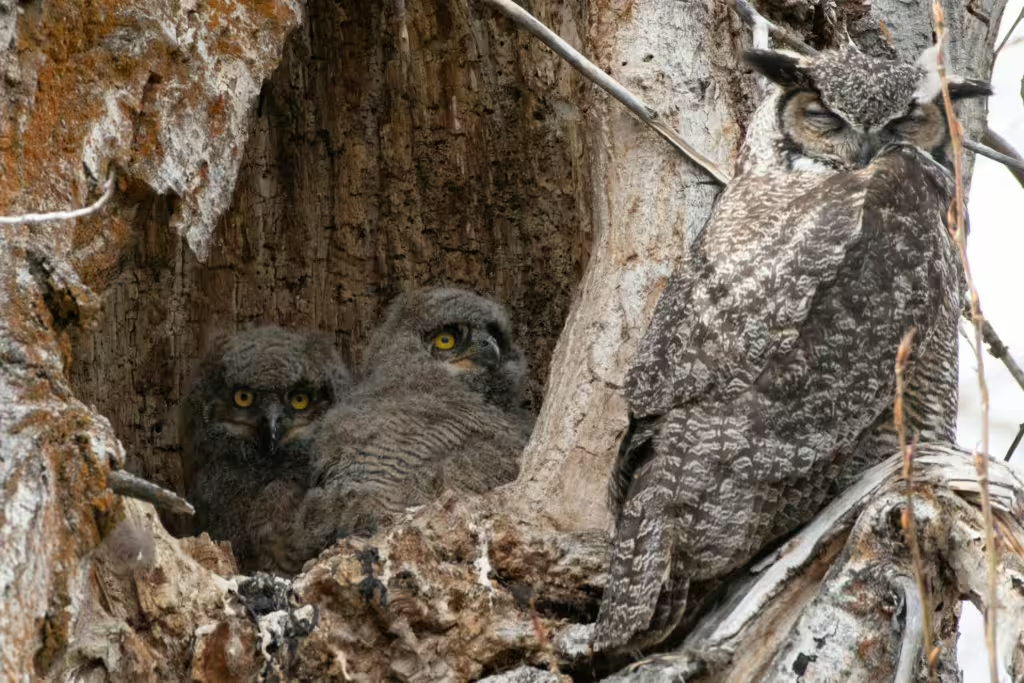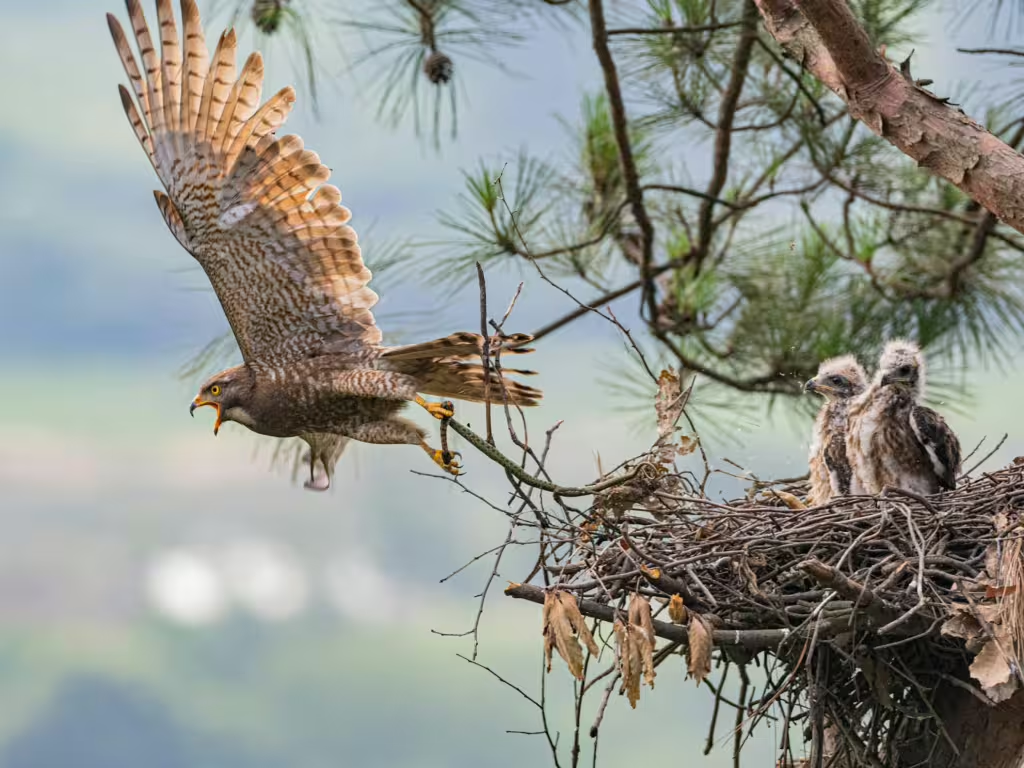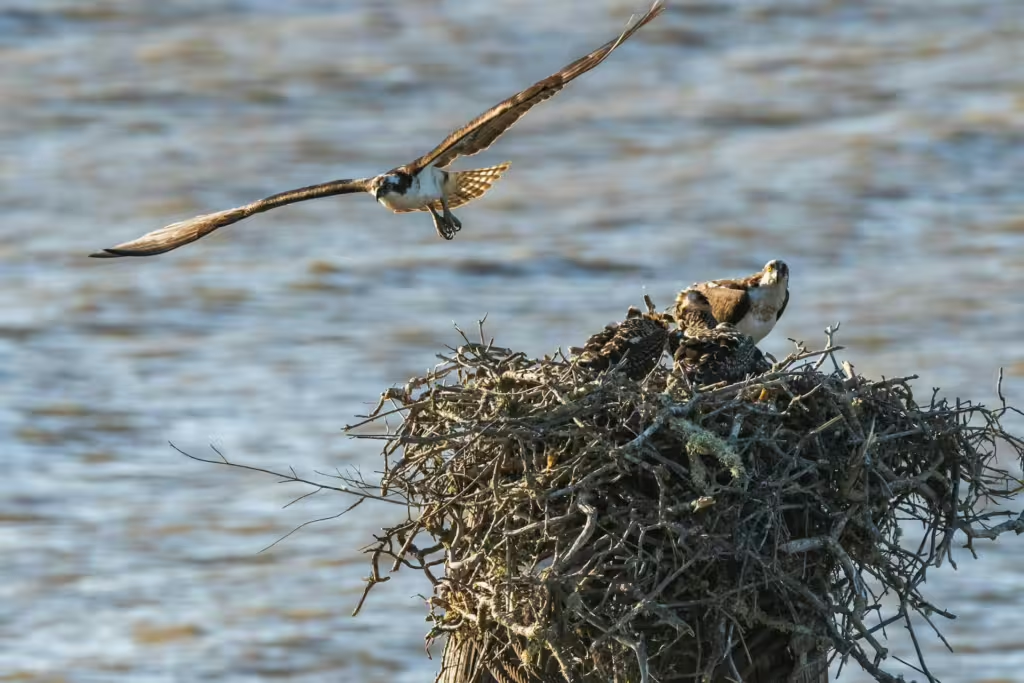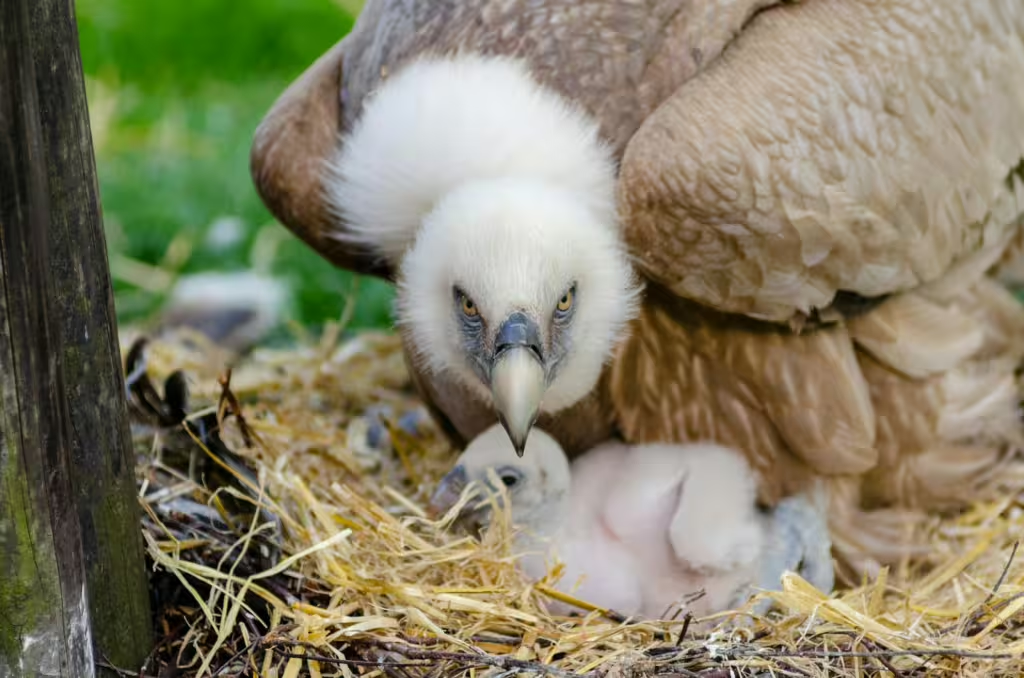After taking a brief departure from our exploration of nature’s most fascinating parents, we return to the theme with some of the most ferocious moms and dads in the animal kingdom; the raptors. No, we’re not talking about dinosaurs— not yet anyway—we’re here to discuss avian predators: hawks, eagles, vultures, owls, and the like.
Possessed of mighty wings, powerful talons, hooked beaks, and unparalleled hunting abilities, these avian predators rule the roost and are often the apex predator in their home ecosystems. Some might see them as solitary beings, but when it comes to raising their young, many display a more tender side. This doesn’t mean they aren’t some of the most fiercely protective, dedicated parents in the entire bird world, however.
Like all young birds, baby raptors are quite delicate when they hatch and even more so in the weeks before. They might eventually grow to become lords and ladies of the skies, but they begin as featherless fledglings, nestbound and mostly helpless. As a result, their survival depends on the skill, vigilance, and in many cases, the sacrifice of their parents.
In this article, we will examine the lives of raptors from all over the world. We will look into how they care for their young, how they nest, and how they defend their squishy offspring.

What Makes a Raptor?
The family of birds of prey known as raptors are characterized by several key traits. First, they have sharp, hooked beaks that are perfect for tearing out chunks of flesh. Second, they have strong talons that allow them to capture, hold onto, and in most situations, outright kill their prey. Most raptors also have enhanced senses of sight, smell, or hearing. This is the case for eagles, vultures, and owls, respectively. They can be found in most habitats and exhibit different hunting behaviors, but as morphologically speaking, they all possess one or more of the features listed above.
Nesting Habits
In our first section, we will discuss the nesting adaptations exhibited by various raptor species. Most raptor nests tend to be necessarily large and highly durable. Being that all raptors are flying animals, they tend to build these structures in places that are high off the ground in trees, cliffs, radio towers, or even nestled in skyscrapers. These locations keep the nests safe from most would-be invaders and keeps them visible when the parents are forced to leave for food. When a raptor’s nest is placed in a high location, it is what’s known as an eyrie.
Masters of Construction
One of the most famous and recognizable birds of prey on the planet is the American bald eagle. Thanks to their powerful flight muscles and gripping talons, these animals are able to takedown animals many times their size. But did you know they also construct one of the largest nests in the entire bird world. Over the years, these reusable nests can grow to more than 10 feet in width and weigh more than a ton; that’s not just building a house, that’s constructing a generational home! How do the eagles build such large nests for their young? Well, bald eagle pairs are monogamous, meaning they mate for life. So it makes sense that mated pairs work together to build the nests and they maintain it the same way—as a team.
Urban Adaptations
Peregrine falcons are most popular because their record-breaking diving speed, but another interest aspect of these birds has to do with where they choose to build their nests. In the time before cities, these native birds would have built their nests in cliff ledges. The loss of their cliffs meant they had to find other high locales to build upon. Fortunately, cities have a lot of remote, hard-to-reach places where expectant peregrine parents can build their nests. These days, urban peregrines have adapted by nesting on skyscrapers, bridges, and cathedrals.
Opportunistic Nesting
Some species of owl, the great horned owl, for instance, don’t fuss too much about building a nest for their babies. They know that there are plenty of serviceable nests out there that have been abandoned by other birds. Crow and hawk nests are often perfect for this purpose and are often built into trees, barn lofts, or other such abandoned structures.
Egg Laying and Incubation
By the numbers, most raptor species lay between two and four eggs at a time. This laying is spaced a few days apart and it allows for asynchronous hatching of the subsequent chicks. There is an evolutionary purpose for this, as it grants the oldest chick a size advantage that could prove critical if food becomes scarce.
Incubation Roles
As one might expect, the female raptor tends to do most of the incubating. This means that she keeps the eggs warm and protected, while the male goes out to search for food. This type of food provisioning doesn’t just keep the female strong and fed, it also strengthens the pair bonds between the mommy and daddy bird.
Chick Rearing
When raptor chicks hatch, they are blind, featherless, and thus entirely dependent on their parents for survival. Just as it was during the nesting period, the female raptor remains in the nest to keep the chicks warm, while father bird goes out to bring home the bacon.
Feeding the Young
Young raptors, like their parents have voracious appetites, and that voracity is most intense when they are growing. In millennia gone by, many a chick might have perished by swallowing too much food at once. This is why modern raptor parents have evolved methods of pre-chewing or tearing food into easily digestible chunks so that their babies can eat safely. Ospreys and golden eagles are two examples of this type of behavior.
Sibling Rivalry and Survival
The staggered ages of the raptor chicks can, at times, work against some lesser siblings. When times are tough and food is limited, chicks of large raptors will engage in siblicide may occur; either outright outcompeting with the smaller chick, thus forcing it to starve to death or killing it outright.

Teaching and Training: Learning to Hunt
Predatory birds are born with great hunting and survival instincts but even they don’t know everything right from the start. As a result, baby raptors benefit greatly from observational learning and they rely on their parents to demonstrate certain hunting techniques. They don’t “hold their hands” forever, though. The post-fledgeling period, when baby birds get their flight feathers, is when time begins to run out for lessons. Within this period, the parents will reduce their feeding and encourage the babies to leave the nest in search of food. Some birds, like kestrels, will help their chicks engage in mock hunting flights. They will practice doing extreme aerial dives on insects before graduating to rodents and birds.
Defense of the Nest
No matter where they place their nest, raptors maintain constant vigilance over the area. They will guard the nest and their young with their lives, fighting against rival bird species, snakes, raccoons, and even humans if they get too close. One of their greatest tools for keeping the nest safe has to do with its location, generally a far-off place most critters cannot reach, and camouflage, which helps it remain undetected at a distance.

True Investigator Says…
As you can see, raptors aren’t just fearsome foes to many potential prey animals, they are also caring, clever parents. Avian parents have proven, time and again, how dedicated, strategic, and fiercely protective they are when it comes to looking after their young. No matter where you sit on the food chain, raising your young is never easy. It is only through cooperative parenting, adaptability, and deep-seeded parental instincts that they have managed to find ways to successfully bring their progeny up in this dangerous modern world.
Many of the world’s raptors face threats caused by pollution, habitat destruction, overhunting, and climate change, but just as many have found ways to survive and ensure the continued survival of their young; and that’s no mean feat. That said, we still need to do all we can to mitigate these dangers and ensure that these incredible avians continue to exist and contribute to the food chain for many centuries to come.
Discover more from TrueInvestigator
Subscribe to get the latest posts sent to your email.


